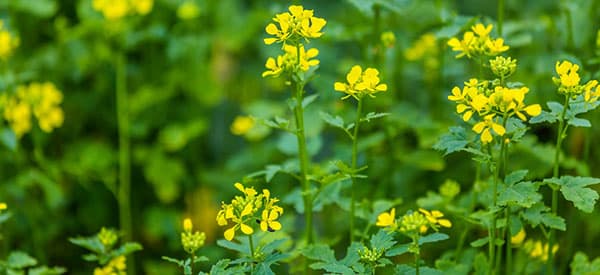
Mustard
Mustard (Brassica alba) is a plant from the cabbage family grown for its seeds and green tops. Mustard is one of the leading spices worldwide, with its paste popularly used for flavoring hotdogs and hamburgers. It is also a favored condiment for chutneys, salad dressings, and dry rubs. Many parts of the mustard plant are edible such as its young leaves, which are cooked like cabbage or added to salads.
Mustard has been around for many centuries. Its origin was traced back to ancient Egypt. Greeks and Romans used the plant as food and medicine as a cure for many ailments, including bubonic plague. Romans introduced mustard to France where it was cultivated by monks. Prepared mustard or Dijon began in Dijon, France around the 13th century.
Where Is Mustard Found
Mustard is cultivated mainly as a vegetable. Wild ones typically grow in vacant lots, grain fields, and other waste areas. When grown in a garden or crop setting, mustard can be a nuisance plant. It tends to get weedy and may host many insects and pests that can harm nearby plants. The cultivation of mustard for the seed and food industry is higher in Canada, Nepal, and Ukraine.
⇒ The Complete Map of Edible Plants: Find Out What You Have in Your Area! (Video)
How To Identify Mustard
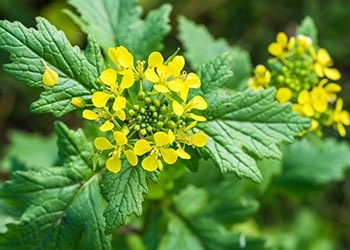
Mustard is a quick-growing herbaceous plant with a pungent and bitter taste. It is deciduous, erect, and spreads rapidly because it is weedy. Mustard grows yellow flowers with ribbed and bristly stems.
Leaves. Mustard leaves are pale green, smooth, and serrated. The leaf blades are rugged and with an uneven surface. They are simple, alternate, and compound (many leaflets) in a single stem. Its blade shape ranges from elliptical, oval, or obovate.
Flowers. Mustard blooms from June to August with tiny gold and yellow flowers. Each flower has four petals with six stamens and a green pistil.
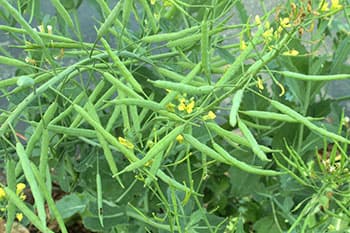
Fruits and Seeds. When the flower petal falls off, the pistil grows into a thin fruit pod. Each plant can produce a narrow, elongated and typically many-seeded capsule known as silique. They form along the stalk below the flower head in round pods ½ to 1 ½ inch wide. Mustard seeds are spherical and hard with either black, brown, or white color, depending on the variety.
Roots. Mustard has a taproot system with a large dominant root and a bulbous shape that tapers at the end. It can grow as deep as 1 to 3 feet, or deeper in dry soil conditions, as the plant seeks water.
Stem. Mustards can grow at about 2 to 3 feet tall with ribbed stems. It usually branches only in the upper part and is covered with hairs that point downward.
⇒ Plant Identification Guide – 400 Wild Plants That You Can Forage For (Video)
Brassica alba, or white mustard, is also known as Sinapis alba and Brassica hirta. It is an annual plant of the Brassicaceae or mustard family that produces the yellow mustard condiment. Turmeric powder is the spice added to white mustard that gives it its yellow color. Thus, white mustard is most often referred to as yellow mustard.
Mustard has about 40 varieties and the most common are white (yellow), black, and brown mustards. These varieties are used for culinary and medicinal purposes.
- White mustard (Brassica alba) bears the largest fruit among the three and has the mildest taste.
- Brown mustard (Brassica juncea) is quite acrid. It is used in the preparation of Dijon mustard.
- Black mustard (Brassica nigra) is the rarest type, with an intense flavor that gives the dishes a sweeter and nuttier taste. It is used for making mustard oil.
How To Grow Mustard
Mustard grows in arable wastelands and requires high-nutrient soil. The plant is easy to grow, although it is sensitive to moisture. If you want to grow mustard as microgreens, scatter the seeds in the seed bed and harvest them when ready.
Cultivating mustard ensures ample harvest since the seeds are self-sowing. Propagation of mustard can be done through its seeds and re-potted seedlings. It is readily available in many farm supplies and online seed stores. This no-fuss plant can grow even when directly sown in the garden. When cultivating mustard as an edible plant, you will also get an extra reward for its ornamental value.
Growing Mustard From Seeds
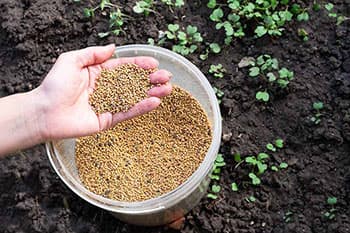
You may sow mustard seeds around six weeks before the last frost. The seeds are easy to germinate but if the soil is colder than 40⁰F, it may take a while for mustard to grow.
Start by preparing the seedbed with loamy soil and plenty of organic matter. Sow mustard seeds about half an inch deep and an inch apart. In rows, provide a space of about six to eight inches. Tamp the soil lightly and keep them moist until they germinate.
After they sprout and gain their set of true leaves, thin the seedlings and space them at least four inches apart.
Plant Care And Maintenance
The best thing about mustard is that they are easy to grow and require little maintenance. Most mustard grows in full sun, but some varieties fare better in part shade.
Mustard will do best when under the following planting conditions:
- Well-draining and fertile soil, high in organic matter
- Soil pH level at 6.0 to 7.5
- An inch of water in a week
- Moist soil but not waterlogged
Mustard and other members of the Brassica family are prone to soilborne diseases and pests. It is not a good idea to plant them in the same place two years in a row. Do not plant mustard in soil previously planted with other Brassica like kale and broccoli.
Aphids, flea beetles, whiteflies, and slugs may infest mustard. Neem oil may help combat aphids and flea beetles while insecticides can treat whiteflies. A slug trap or a barrier such as broken eggshells can keep the slugs at bay.
When the plant is thoroughly infected, the best you can do is pull the plant and start over again.
How To Harvest Mustard
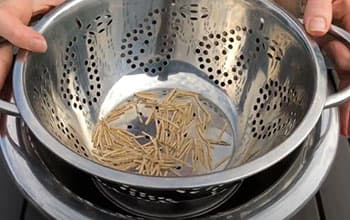 When the first true sets of mustard leaves appear, they are almost ready for harvest as microgreens. If you want the baby leaves for salads, harvest them by cutting the outer leaves.
When the first true sets of mustard leaves appear, they are almost ready for harvest as microgreens. If you want the baby leaves for salads, harvest them by cutting the outer leaves.
As the weather warms, stop harvesting the leaves if you intend to grow mustard seeds. You may choose to leave them as they are and allow them to self-sow. Or, you can cut the plant when the seed head begins to appear papery and dry.
Harvest the seeds by wrapping the plants in an old sheet. Roll and stomp on the sheet to thresh the seeds. Remove the plant and put the threshed seeds in a sieve and discard all the chaff and debris. Gather the seeds in a dry container until they are ready for use.
What Mustard Is Good For And Natural Remedies Made From It
Mustard is not only valuable for its spice, but it also comes with many health benefits. It has phenolic compounds and many nutrients that possess excellent anti-cancer properties. Its antioxidant action protects the cells from oxidative stress and prevents the development of many diseases.
One of the most common traditional uses of mustard is in relieving pain. In folk medicine, mustard is used for treating toothache, foot pain, lumbago, and joint problems. It is an effective anti-inflammatory that can also cure lesions associated with psoriasis.
Mustard is also a valued plant for improving the digestive system. Consuming mustard can spike up the production of saliva. It helps in the proper digestion of food and increases metabolism. Mustard’s high fiber content also brings out valuable effects in promoting digestive health. Mustard is effective against constipation, hemorrhoids, colon, and other gut problems.
The antimicrobial and antibacterial properties of mustard are effective in combatting infections. It improves the body’s action against common pathogens to lessen the number of sick days. Mustard can cure respiratory infections as well as dental and skin problems.
The greens and oil of mustard help support heart health and lowers cholesterol. According to a study, cooked mustard greens have an excellent bile-binding activity that can significantly lower cholesterol.
⇒ The US Army’s Forgotten Food Miracle (Video)
With a variety of nutrients and vitamins, mustard supports immune health to decrease the possibility of contracting serious diseases. Mustard is a valuable herbal medicine with the following benefits:
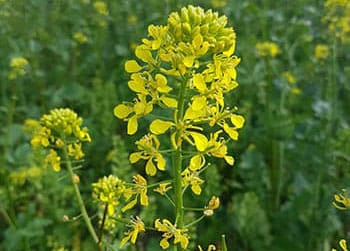
- Prevention of cancer and other debilitating diseases
- Liver and blood detoxification
- Lower cholesterol
- Skin and eye protection
- Immune booster
- Digestive support
- Respiratory cure
- Muscle and bone building
- Heart health
- Oral health
- Boost metabolic processes
- Skin and hair health
- Cure for anemia
What Parts Of Mustard Are Used For Remedies
In Western medicine, mustard seeds are seldom used internally as a remedy. Rather, ground seeds are used as a poultice or added to bath water. Mustard is mostly used in the kitchen for culinary and food preservation such as in pickles.
In traditional medicine, however, dried mustard seeds are consumed internally. They are also grounded for external applications.
As a herbal remedy and supplement, mustard is available as seed oil, liquid extract, tincture, or capsule. Its volatile oil is a powerful medicine consumed orally or applied topically.
Mustard seed tea can be used as a gargle for sore throat and oral problems. Its leaves are not only a good addition to salad greens, but are also used for treating cough, tuberculosis, and pleurisy in Traditional Chinese Medicine (TCM).
Easy Basic Mustard Recipe
Ingredients:
- 6 tbsp. whole mustard seeds
- ½ cup mustard powder
- 2 tsp salt
- ½ cup water
- 3 tbsp. cider vinegar
- 1 tsp ground turmeric
- 2 tbsp. honey
Steps:
- Soak the mustard seeds overnight in water for a tamed taste. You can skip this step if you want zingier mustard.

- Grind the whole mustard seeds until semi-grounded using mortar and pestle.

- Pour it into a bowl and add the salt and mustard powder. Mix well. Stir in turmeric and honey.

- Add water and mix until well incorporated and let sit for about 10 minutes. If you want a mellower taste, let the mixture sit a little longer.

- Add the vinegar and mix them well.

- Transfer the mixture into a glass jar with a lid and store it in the fridge. Let the mustard set overnight before using.

Mustard will last for up to a year in the fridge. If you are using black or brown whole mustard, soak them in water overnight to make them pliable. Optionally, you can use wine, grape juice, or other fruit juices as citric acid instead of vinegar.
How To Use
The prepared mustard sauce is best for consumption as a dip for various food choices. It is also best used for stir-frying. You can also use this recipe to treat cough by giving the patient a teaspoonful three times a day. Alternatively, you can use the paste as chest plaster for alleviating cough. Do this by spreading the paste on a clean cloth and applying it to the chest for 15 minutes.
What Plants Resemble Mustard
| Features | Mustard (Brassica alba) | Common Wallflower (Erysimum cheiri) | Tumble Mustard (Sisymbrium altissimum) |
|---|---|---|---|
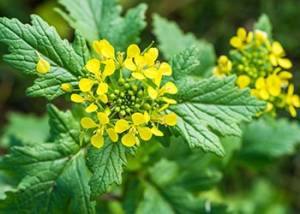 | 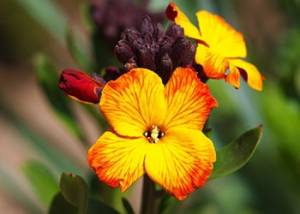 | 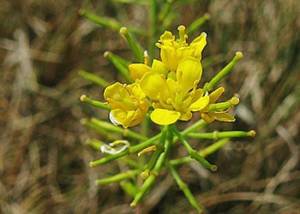 | |
| Size | 2 – 3 ft | 1 – 1.5 ft | Up to 5 ft |
| Leaves | Pale green to green; smooth; serrated; compound | Green; simple; rosette; linear; oblong | Large lower leaves with leaflets; smaller and narrower upper leaves |
| Flowers | Gold/yellow; tiny; bisexual; obovate shape | Yellow/red/purple; rounded petals; purplish-green sepals | Pale yellow; small; four petals |
| Fruits/Seeds | Numerous seeds; capsule or silique type fruit; spherical seeds | Long; narrow; slender; silique | Narrow seedpods with numerous rust-colored seeds |
| Stem | Ribbed; hairy; branching on the upper part | Erect; woody; leafy; branched at the base | Single-stemmed; branching on the upper part |
| Scent | Pungent; peppery-garlic | Sweet | Almost sour scent |
Warnings And Cautions
Mustard greens are more effective when they are cooked. However, reheating leftovers may convert nitrates to nitrite and produce reactive acid in the stomach and enhance bacterial growth.
When taken as food, mustard is likely safe for all ages. However, overconsumption can affect blood clotting due to its high vitamin K content. If you are taking blood-thinner medication like warfarin, avoid overconsuming mustard.
Do not use white mustard in medicinal amounts if pregnant since it may trigger a menstrual period. There is no evidence of its safety when used in breastfeeding. Thus, take it in amounts no greater than what is usually consumed in food.
People allergic to nuts, legumes, pollen, and plants from the Rosaceae family are also likely allergic to mustard.
Consult your physician if you intend to take mustard oil and other supplements as a herbal remedy. Presently, there is not enough scientific information to prove its safety. Dosage often depends on the age, health, and other conditions of the user.
How to Recognize a Heart Attack and What to Do Next (Video)
Foraging Calendar: What to Forage in November








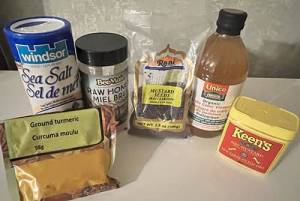
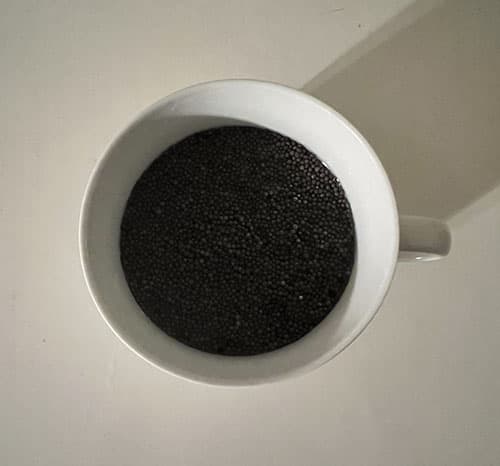
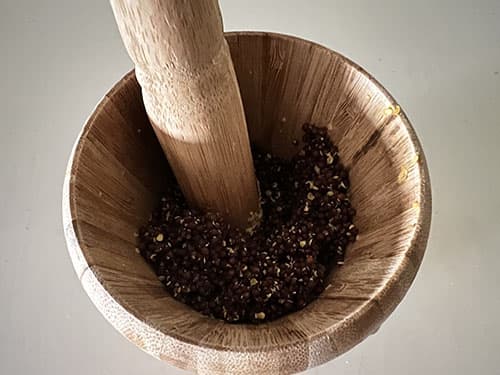
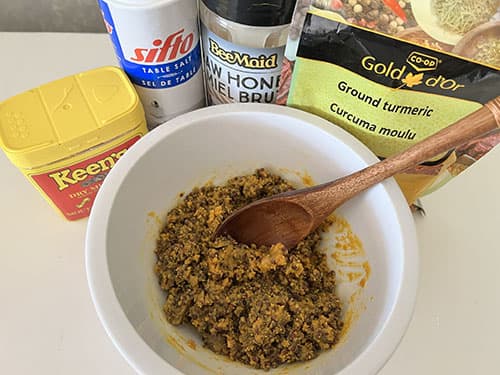
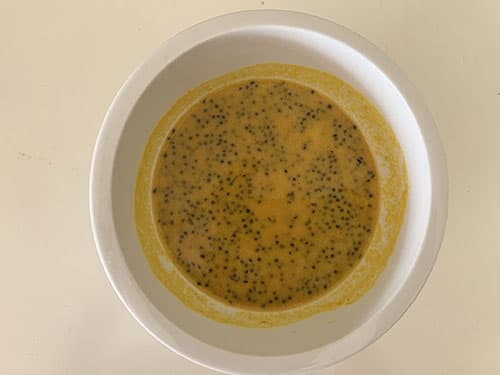
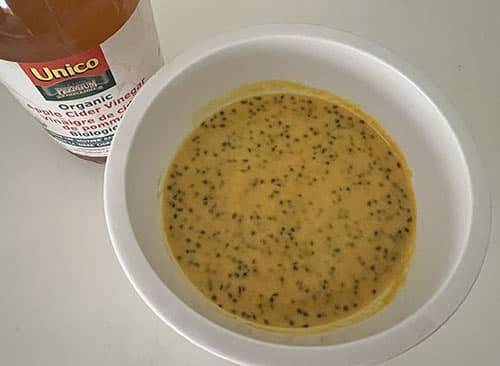
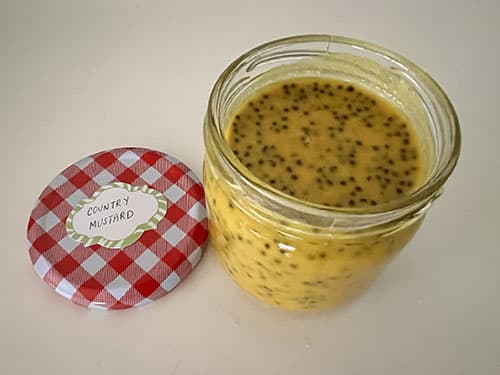
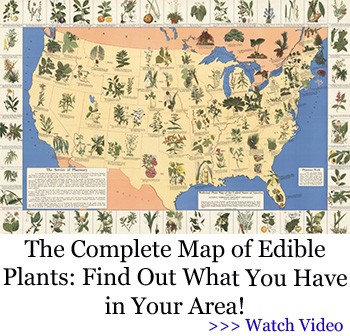

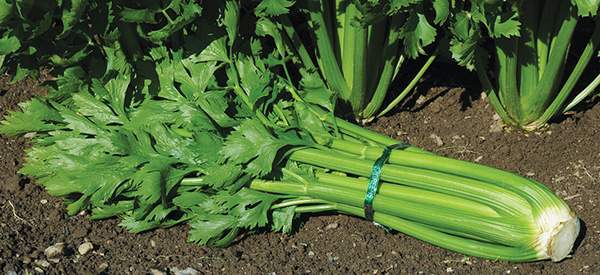
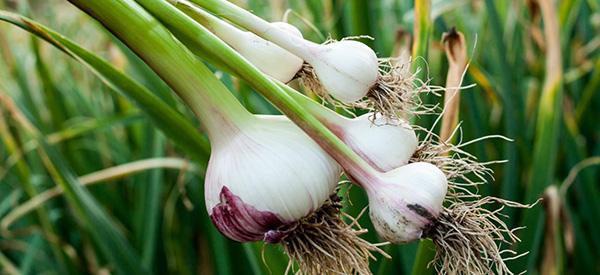
I literally just got off the phone with my 95-yr-old Gma before reading this article, and she was telling me about how her mom would always put a mustard poultice on their chest when they had bad colds.
I got the mustard plaster as a kid too. We never had chemical antibiotics – hot tea, chicken soup, and the dreaded garlic medicine 🤣
Hello Sarah,
Thank you for sharing this with us! It’s greatly appreciated!
The anti-inflammatory and warming properties of mustard begin to work at a deep subcutaneous level, relieving pain, relaxing muscles, and acting as a counter-irritant. The Mustard poultice is also used to treat colds, coughs, and congestion.
We also recommend checking out the article below; it’s about how to make a mustard plaster at home:
https://thelostherbs.com/diy-medicinal-mustard-plaster/
Many blessings and good health!
Yellow mustard is the only thing I have found that actually relives nighttime leg cramps. I get out of bed and eat 2 tablespoons of mustard and the cramps are gone in a few minutes. It also works for hand and arm cramps. I can usually tell when I’m going to get them after a strenuous day of work and heat. I will eat mustard on just about anything and found that the cramps will never come if I’m proactive. I have been getting nighttime leg cramps since I was about 8 years old and have found through trial and error that the over the counter remedies have little or no results, and they are expensive. Now at 61 I am a lot wiser.
My doctors have been at a loss for years about why I get so many leg cramps other than my having to sit for long periods as a Trucker. I experienced a severe calf muscle cramp one day while I was in a repair shop and one of the mechanics gave me 2 condiment packages of mustard and told me to squirt them in my mouth, swish it around and swallow. I tried it and it not only worked but there was no after the cramp soreness. Now I stock up on them and sleep better than I have in years. I haven’t had much success in relieving other cramps though like in my ribcage areas.
That’s amazing! I’ll have to share this with my husband.
Hello Douglas,
We are really happy to hear mustard helps you so much!
Thank you for sharing your experience with us.
Many blessings and good health!
I didn’t try mustard yet , but for my cramps and aches I’m using EASE Magnesium , all is gone in 90 seconds